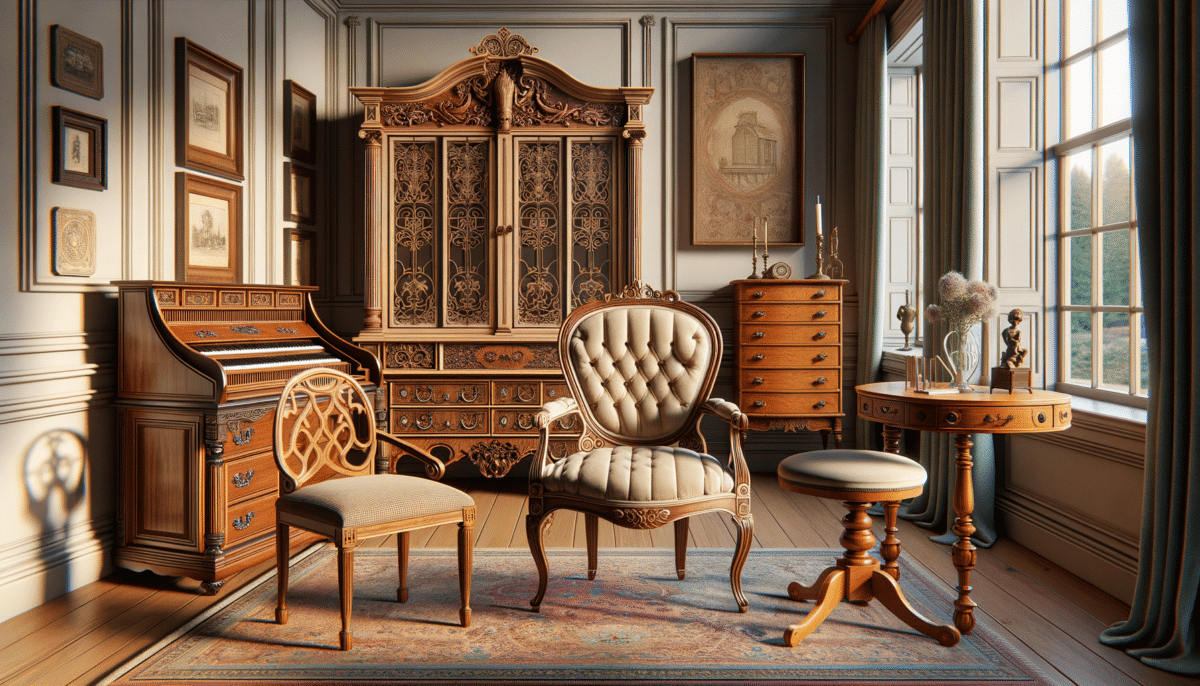Introduction to Classic Furniture Styles
Furniture is more than just a functional necessity; it is a reflection of personal style and cultural heritage. Throughout history, furniture styles have evolved, influenced by social, economic, and technological changes. Yet, some styles have stood the test of time, continuing to inspire and captivate. Classic furniture styles are renowned for their elegance, craftsmanship, and enduring appeal. In this article, we will explore five timeless furniture styles that remain popular in modern homes, offering a blend of beauty and functionality.
Victorian Furniture: Opulence and Detail
Victorian furniture, named after Queen Victoria’s reign, is synonymous with opulence and intricate detail. This style emerged in the 19th century, characterized by elaborate ornamentation, dark woods, and luxurious fabrics. Victorian furniture pieces often feature intricate carvings, curved lines, and rich upholstery, creating a sense of grandeur. Despite its historical roots, Victorian furniture remains popular for its ability to add elegance and sophistication to any space.
Key features of Victorian furniture include:
- Heavy and solid construction
- Use of mahogany, walnut, and rosewood
- Intricate carvings and embellishments
- Rich, dark finishes
Today, Victorian-inspired pieces are often used in formal living rooms and dining areas, where their detailed craftsmanship can be appreciated. The style’s emphasis on luxury and attention to detail makes it a favorite among those who appreciate historical elegance.
Mid-Century Modern: Simplicity and Functionality
Mid-century modern furniture, which gained popularity in the mid-20th century, is celebrated for its simplicity, clean lines, and functionality. This style emerged as a response to the ornate designs of previous eras, focusing on minimalism and practicality. Mid-century modern pieces often feature sleek, geometric shapes and a mix of natural and synthetic materials.
Notable characteristics of mid-century modern furniture include:
- Simple, clean lines
- Use of materials like teak, walnut, and metal
- Incorporation of new technologies and materials
- Focus on functionality and comfort
The timeless appeal of mid-century modern furniture lies in its ability to blend seamlessly with various interior styles. Its emphasis on form and function makes it a popular choice for contemporary homes, where practicality and aesthetics are equally valued.
Art Deco: Glamour and Geometry
Art Deco furniture emerged in the 1920s and 1930s, reflecting the glamour and optimism of the era. This style is characterized by bold geometric shapes, luxurious materials, and a sense of modernity. Art Deco pieces often incorporate elements of exoticism, drawing inspiration from ancient cultures and new technologies.
Key elements of Art Deco furniture include:
- Bold geometric patterns
- Use of materials like chrome, glass, and lacquer
- Incorporation of exotic woods and animal hides
- Emphasis on symmetry and streamlined forms
Art Deco furniture is renowned for its ability to add a touch of glamour and sophistication to any space. Its bold designs and luxurious materials continue to captivate those seeking to make a statement with their interior decor.
Scandinavian Design: Minimalism and Nature
Scandinavian furniture design, which gained prominence in the mid-20th century, is celebrated for its minimalism, functionality, and connection to nature. This style emphasizes simplicity, clean lines, and the use of natural materials, reflecting the Nordic appreciation for the environment.
Characteristics of Scandinavian furniture include:
- Light, neutral color palettes
- Use of natural materials like wood and leather
- Focus on functionality and simplicity
- Incorporation of natural light and open spaces
Scandinavian design’s enduring popularity is due to its ability to create a calm and inviting atmosphere. Its emphasis on simplicity and nature makes it a favorite among those seeking a serene and uncluttered living space.
Conclusion: Embracing Timeless Elegance
Classic furniture styles offer a window into the past, showcasing the artistry and craftsmanship of different eras. Whether it’s the opulent details of Victorian furniture, the sleek lines of mid-century modern, the glamour of Art Deco, or the simplicity of Scandinavian design, each style brings its unique charm and character to modern interiors. By embracing these timeless designs, homeowners can create spaces that are both beautiful and functional, reflecting their personal taste and appreciation for enduring elegance.
